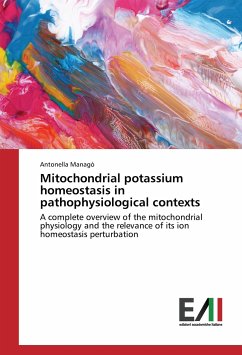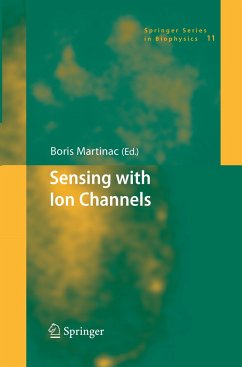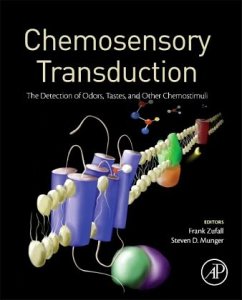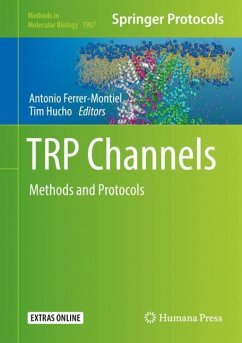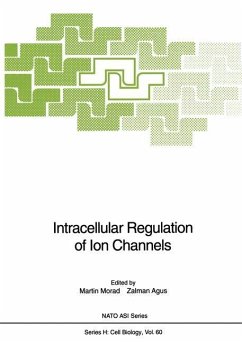
Potassium Channels
Methods and Protocols
Herausgegeben: Shyng, Show-Ling; Valiyaveetil, Francis I.; Whorton, Matt
Versandkostenfrei!
Versandfertig in 6-10 Tagen
83,99 €
inkl. MwSt.

PAYBACK Punkte
42 °P sammeln!
This volume provides readers with the latest techniques and approaches used to study K+ channels. There are a wide range of topics covered in the book, such as channel structure; K+ channels and their roles in physiology and disease; single-molecule FRET; proteins expression levels in vivo; real-time correlation of channel activity; gating; pharmacology; physiological functions; and channelopathies. Written in the highly successful Methods in Molecular Biology series format, chapters include introductions to their respective topics, lists of the necessary materials and reagents, step-by-step, ...
This volume provides readers with the latest techniques and approaches used to study K+ channels. There are a wide range of topics covered in the book, such as channel structure; K+ channels and their roles in physiology and disease; single-molecule FRET; proteins expression levels in vivo; real-time correlation of channel activity; gating; pharmacology; physiological functions; and channelopathies. Written in the highly successful Methods in Molecular Biology series format, chapters include introductions to their respective topics, lists of the necessary materials and reagents, step-by-step, readily reproducible laboratory protocols, and tips on troubleshooting and avoiding known pitfalls.
Cutting-edge and comprehensive, Potassium Channels: Methods and Protocols is a valuable resource for all researchers who are interested in studying potassium channels.
Cutting-edge and comprehensive, Potassium Channels: Methods and Protocols is a valuable resource for all researchers who are interested in studying potassium channels.




